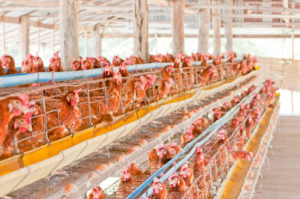Salmonella, the deadly bacterium that has a sneaky way of infiltrating our fruits and vegetables, has struck again. Since April 10, at least 228 people in 23 states have been sickened by the contaminant (the states include: Arizona, California, Colorado, Connecticut, Idaho, Illinois, Indiana, Kansas, New Mexico, Oklahoma, Oregon, Michigan, Texas, Utah, Virginia, Washington, and Wisconsin, though it is not known if the tomatoes were grown in those states or imported.) According to the Centers for Disease Control and Prevention, the Salmonella outbreak might have also contributed to the death of a Texas cancer patient.
Here’s a quick run-down on how to stay safe from the U.S. Food & Drug Administration, as well as a list of reasonable options if you still want to eat tomatoes this summer.
What You Can Eat, What to Avoid:

Alabama
Alaska
Arkansas
California
Colorado
Delaware
Florida (counties of: Jackson, Gadsden, Leon, Jefferson, Madison, Suwannee, Hamilton, Hillsborough, Polk, Manatee, Hardee, DeSoto, Sarasota, Highlands, Pasco, Sumter, Citrus, Hernando, Charlotte)*
Georgia
Hawaii
Iowa
Kansas
Kentucky
Louisiana
Maine
Maryland
Massachusetts
Michigan
Minnesota
Mississippi
Missouri
New Hampshire
New Jersey
New York
Nebraska
North Carolina
Ohio
Pennsylvania
South Carolina
Tennessee
Texas
Utah
Vermont
Virginia
Washington
West Virginia
Wisconsin
Belgium
Canada
Dominican Republic
Guatemala
Israel
Netherlands
Puerto Rico
* Shipments of tomatoes harvested in these counties are acceptable with a certificate issued by the Florida Department of Agriculture and Consumer Services.
Eat:
Cherry tomatoes, grape tomatoes, and tomatoes still on the vine appear to be safe to eat. Canned (that is, processed) or bottled foods like grocery-store tomato juice and spaghetti sauce are also safe if they were processed by a commercial food-processing facility.
Be wary of fresh salsa, guacamole, pico de gallo, and other prepared foods that contain tomatoes. Ask the proprietor of the store or restaurant to verify the source of the tomatoes they use. If you’re unsure that the tomatoes are safe, says the FDA’s food safety chief, Dr. David Acheson, “don’t eat them.”
Get Treatment Immediately
People who have eaten food contaminated with Salmonella often have fever, diarrhea (which may be bloody), nausea, vomiting, and abdominal pain. Infection with Salmonella also may be more serious or fatal in young children, frail or elderly people, and people with weakened immune systems. If you suspect Salmonella poisoning, seek medical help immediately.
Know How Salmonella Spreads
Salmonella lives in the intestinal tracts of some animals, and can survive in soil and water for months. Once Salmonella has contaminated something, it can be spread from surface to surface. A tomato contaminated with Salmonella can spread the bacterium to the hands of a person who cuts the tomato and to the cutting board on which the tomato is sliced, for example. Because Salmonella is very hard to wash off, the FDA says consumers should not try to wash tomatoes that are implicated in the outbreak. Instead, throw these tomatoes out.

What About Tomatoes from Farmers’ Markets and Other Locally Grown Sources?
Before you buy tomatoes from the local farmers’ market, make sure the tomatoes were indeed grown locally. Farmers’ markets get their tomatoes from a variety of sources that are not necessarily limited to local farms. These other sources may include the same ones that provided the tomatoes implicated in the Salmonella outbreak. Ask retailers at farmers’ markets where their tomatoes come from to be sure they haven’t been grown in a state where salmonella is present.
That being said, chances may be higher that tomatoes grown at your local farmers’ market are safe. Find the nearest farmers’ market at the U.S. Dept. of Agriculture’s website.
To find farmers that sell direct to consumers look here.
To find food grown in your community, check with Local Harvest here.
Want to grow your own? There’s still time to plant and harvest tomatoes. You can put them in big pots on your porch or patio, or in a backyard garden. Get organic gardening tips here.
And if you want to plant a garden but have no room at your own home or apartment, try a community garden. If it’s too late for this year, get on the waiting list for this fall or next spring.













2 thoughts on “How to Find Safe Tomatoes”
It’s crazy that we have to worry about the safety of something we need to eat in order to live.
I was not aware of this and never thought of it. Tomatoes can be unsafe too, that’s shocking! I am glad that i visited this post, the tips and precautions shared by this post are very useful. I will definitely keep them in my mind.
Comments are closed.